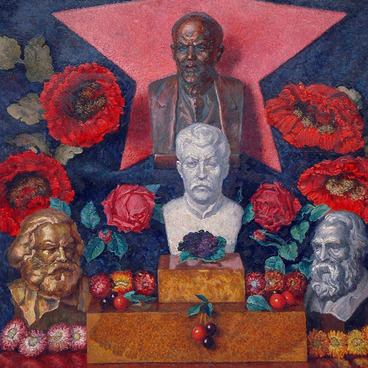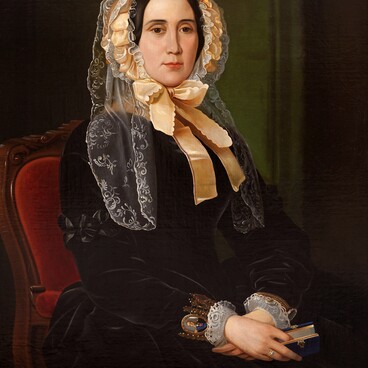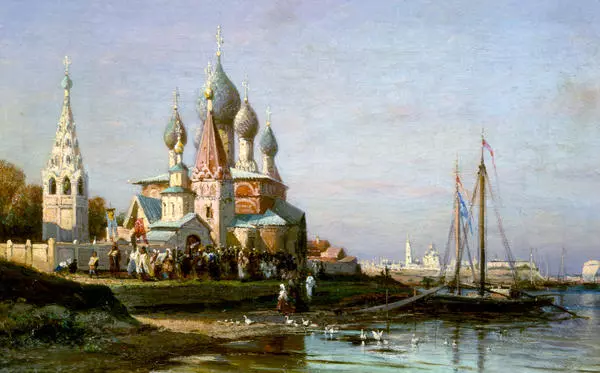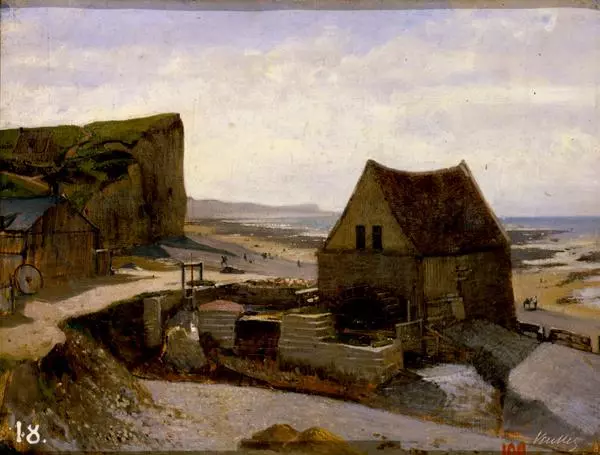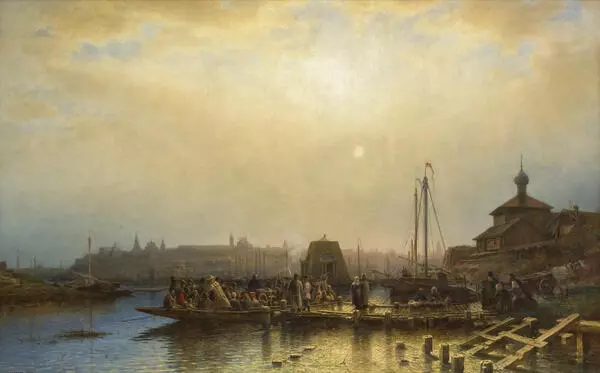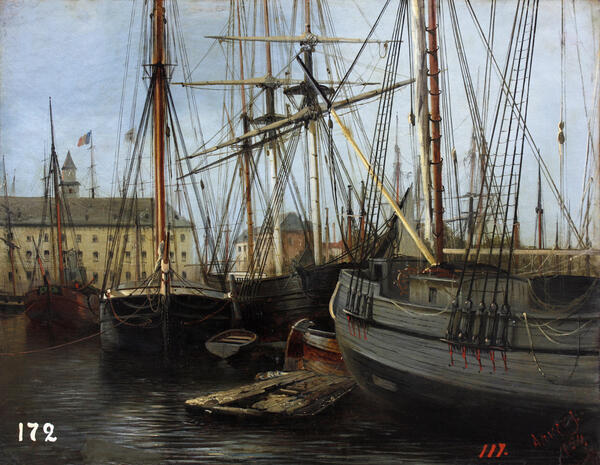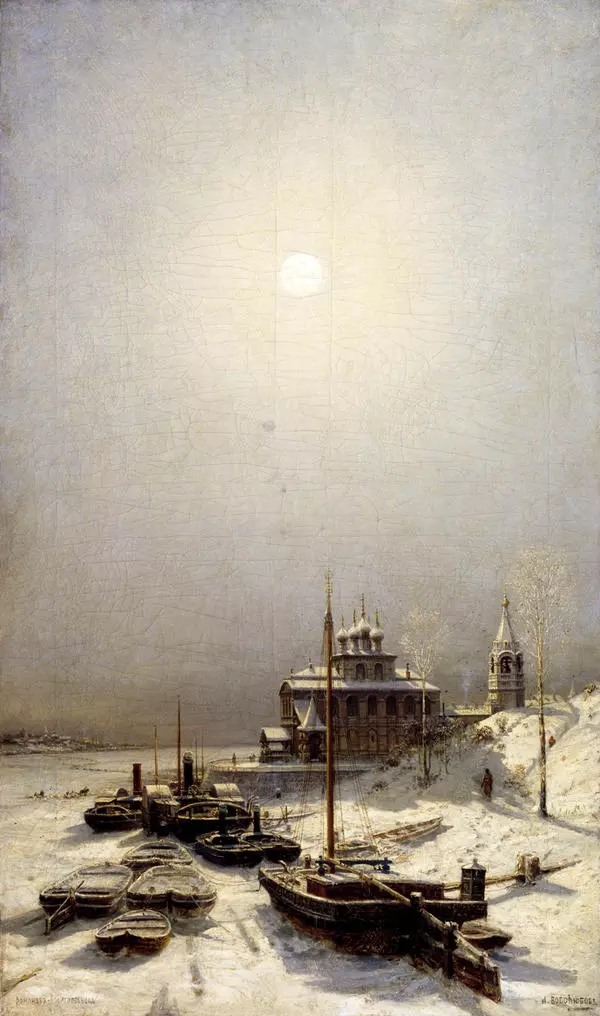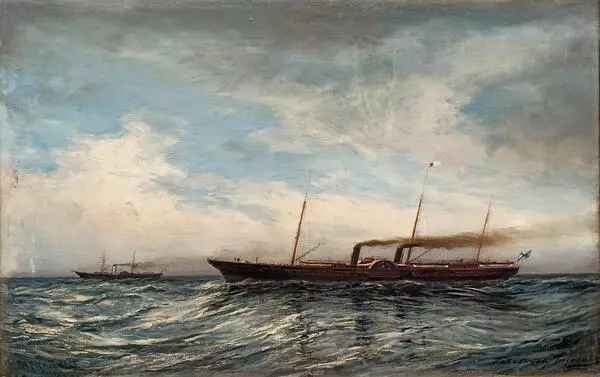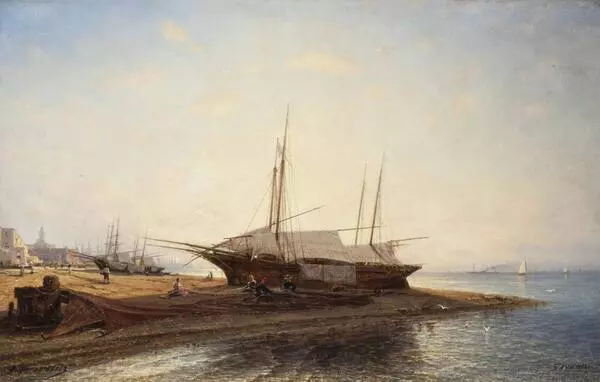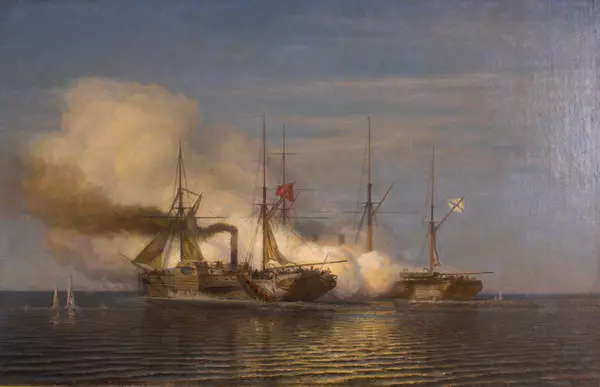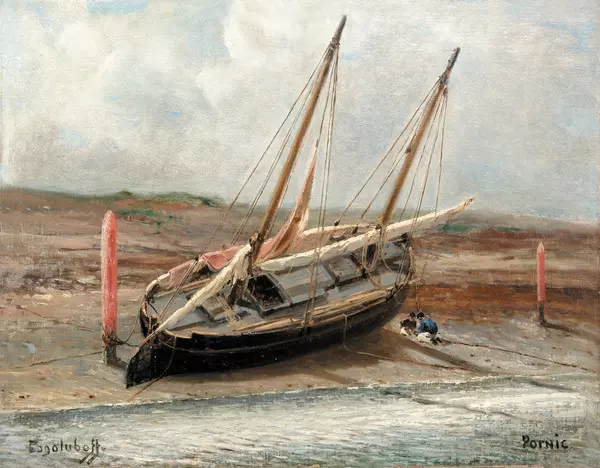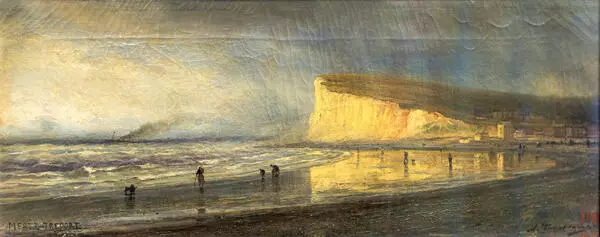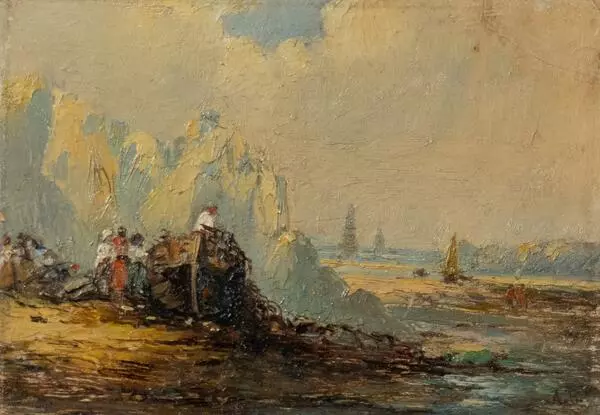The collection of the Volgograd Museum of Fine Arts contains three works by the artist Alexey Bogolyubov. His works became one of the first exhibits that formed the basis of Russian painting collection at the Volgograd Museum of Fine Arts.
These paintings, including ‘Ocean Shoreline’, were created in France, where Bogolyubov settled in 1873. The artist captured the majestic and restrained beauty of the northern nature of Normandy. A small chamber work is distinguished by a precisely adjusted completed composition. This is typical of academic painting, the principles of which Bogolyubov adhered to. The artist strove to create a general, holistic impression of the landscape, and at the same time tried carefully and reliably convey the smallest details, for example, fishing boat tackle.
Bogolyubov’s artistic technique was close at the same time to the impressionistic and Barbizon style of painting.
The Barbizon school of painting originated in France in the middle of the 18th century. The Barbizonians were the first to turn to realistic landscape, which ceased to be just a background for plots and became an independent genre of painting. A characteristic technique of the Barbizon school was the plein air painting of a study, followed by the completion of the work in the workshop.
Alexey Bogolyubov was a famous battle marine painter, the author of the picturesque history of the Russian fleet. Having lost his father early, he entered the Aleksandrovsky Juvenile Cadet Corps, and from there he was transferred to the Naval Cadet Corps in St. Petersburg. Then Bogolyubov began to paint. Since 1849, without leaving the service, he attended classes at the St. Petersburg Academy of Arts, studied under Mikhail Vorobyov and Bogdan Villevalde. After graduating from the Academy, Bogolyubov, having achieved resignation from service, was appointed an artist of the Main Naval Staff. Glory came to the artist as a master of battle painting. For four years, he has been working on a series of paintings about the Crimean War, which were notable for documentary accuracy.
For a long time Bogolyubov lived in Paris, where he took care of Russian pensioners from the Academy of Arts: Ilya Repin, Vasily Polenov, Vasily Vereshchagin and others. This community of Russian artists was named “Bogolyubov”s circle”.
These paintings, including ‘Ocean Shoreline’, were created in France, where Bogolyubov settled in 1873. The artist captured the majestic and restrained beauty of the northern nature of Normandy. A small chamber work is distinguished by a precisely adjusted completed composition. This is typical of academic painting, the principles of which Bogolyubov adhered to. The artist strove to create a general, holistic impression of the landscape, and at the same time tried carefully and reliably convey the smallest details, for example, fishing boat tackle.
Bogolyubov’s artistic technique was close at the same time to the impressionistic and Barbizon style of painting.
The Barbizon school of painting originated in France in the middle of the 18th century. The Barbizonians were the first to turn to realistic landscape, which ceased to be just a background for plots and became an independent genre of painting. A characteristic technique of the Barbizon school was the plein air painting of a study, followed by the completion of the work in the workshop.
Alexey Bogolyubov was a famous battle marine painter, the author of the picturesque history of the Russian fleet. Having lost his father early, he entered the Aleksandrovsky Juvenile Cadet Corps, and from there he was transferred to the Naval Cadet Corps in St. Petersburg. Then Bogolyubov began to paint. Since 1849, without leaving the service, he attended classes at the St. Petersburg Academy of Arts, studied under Mikhail Vorobyov and Bogdan Villevalde. After graduating from the Academy, Bogolyubov, having achieved resignation from service, was appointed an artist of the Main Naval Staff. Glory came to the artist as a master of battle painting. For four years, he has been working on a series of paintings about the Crimean War, which were notable for documentary accuracy.
For a long time Bogolyubov lived in Paris, where he took care of Russian pensioners from the Academy of Arts: Ilya Repin, Vasily Polenov, Vasily Vereshchagin and others. This community of Russian artists was named “Bogolyubov”s circle”.
